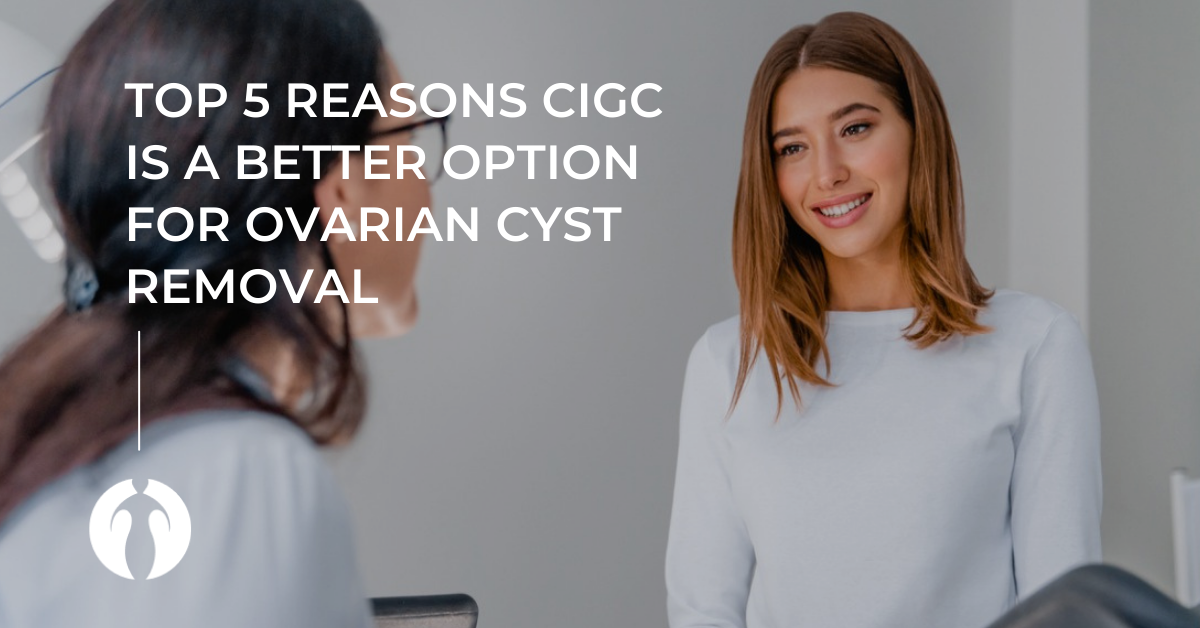- February 18, 2021
Does Adenomyosis Cause Painful Periods?

Could Adenomyosis Be the Reason for Your Painful Periods?
Pain during your period is often a sign of a gynecological condition, and the culprit could be a little-known condition called adenomyosis.
Painful periods are a regular occurrence for many women, and physicians often dismiss pain during menstruation as “normal.” But when pain moves beyond mild cramping and begins to interfere with regular functioning and everyday activities, it’s no longer normal.
On This Page:
- Why Is Adenomyosis So Painful?
- How to Relieve Adenomyosis Pain
- The Best Adenomyosis Treatment
Why Is Adenomyosis So Painful?
Adenomyosis is a disease in which tissue from the uterus grows into the muscle of the uterus. This extra tissue thickens the uterine wall and sheds during the menstrual cycle, causing heavy bleeding and periods that can be extremely painful. Other symptoms of adenomyosis include chronic pelvic pain, pain in the legs and back, pelvic pressure, bloating or swelling of the abdomen, pain with intercourse and clots in the legs and pelvis.
While not cancerous, adenomyosis can still be serious and cause debilitating pain and significant blood loss in many women. Adenomyosis is sometimes confused with endometriosis, which is characterized by uterine tissue growing outside of the uterus. Symptoms between the two conditions are similar, but unlike endometriosis, adenomyosis can sometimes be seen on imaging of the uterus. An MRI may be able to show the thickening of the uterine wall, and an official diagnosis is usually made when a pathologist confirms the presence of uterine tissue in the wall of the uterus after it is removed in a hysterectomy procedure.
CIGC adenomyosis specialists can help you find relief from painful periods. Talk to a patient advocate to get started today.
Find A Specialist Today
Call 888-787-4379
How to Relieve Adenomyosis Pain
It’s possible for adenomyosis to be present along with fibroids or endometriosis. Because symptoms often overlap, clinicians may assume heavy bleeding and pain is due to one of these coexisting conditions. But removing fibroids or endometriosis will not stop severe symptoms if adenomyosis is the true cause.
The only cure for adenomyosis is a hysterectomy. While conditions like endometriosis and fibroids can be removed laparoscopically without damaging the uterus, it’s impossible to separate adenomyosis tissue from the uterine muscle.
For women who are interested in retaining their uterus for future fertility purposes, the symptoms of adenomyosis may be managed with medication. Though they’re not always effective, hormonal suppressors like birth control pills or intrauterine devices (IUDs) may keep symptoms mild temporarily.
The Best Adenomyosis Treatment
The best adenomyosis treatment is a hysterectomy — but this isn’t your mother’s hysterectomy. Adenomyosis specialists at The Center for Innovative GYN Care have perfected minimally invasive techniques that put patients and their recovery first.
The DualPortGYN® hysterectomy technique uses only two small incisions to remove the uterus. Research1 shows the procedure is safer and more effective than other hysterectomy procedures, including robotic, standard laparoscopic and open abdominal surgeries. Rather than the large abdominal scar that typically accompanies open procedures, DualPortGYN leaves virtually invisible scarring at the belly button and bikini line.
CIGC surgeons perform surgeries at select freestanding surgery centers. All procedures are outpatient so patients can go home the same day without a lengthy hospital stay. Most patients recover in about a week after surgery.
BOOK A CONSULTATION
CIGC is dedicated to providing information and materials for women to help navigate the complicated health care system. The CIGC founders, minimally invasive GYN surgical specialists Dr. Paul MacKoul, MD, and Dr. Natalya Danilyants, MD, developed their advanced GYN surgical techniques using only two small incisions with patients’ well-being in mind.
Their personalized approach to care helps patients gain a better understanding of their condition and the recommended treatment so they can have confidence from the very start. Our specialists have performed more than 25,000 minimally invasive GYN procedures, and women come from all over the world to receive their expert care.
References:
- Baxi R, MacKoul P, Danilyants N, van der Does L, Haworth L. Case Series of Laparoscopic Retroperitoneal Hysterectomy. Obstet Gynecol. 2018;131:44S. doi:10.1097/01.aog.0000532990.29869.27
- Read the full article:
- Posted in: GYN Surgery, Adenomyosis, Featured







